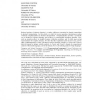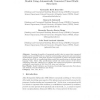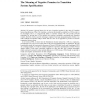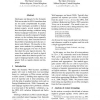619 search results - page 52 / 124 » Formal Methods Meet Domain Specific Languages |
SAS
1995
Springer
13 years 11 months ago
1995
Springer
ntation in Abstract Interpretation AGOSTINO CORTESI Universit`a di Venezia GILBERTO FIL´E Universit`a di Padova ROBERTO GIACOBAZZI Universit`a di Pisa CATUSCIA PALAMIDESSI Univers...
JUCS
2010
13 years 2 months ago
2010
: Assessing the quality of conceptual models is key to ensure that conceptual models can be used effectively as a basis for understanding, agreement and construction of information...
LPNMR
1990
Springer
13 years 11 months ago
1990
Springer
We present a general theory for the use of negative premises in the rules of Transition System Specifications (TSSs). We formulate a criterion that should be satisfied by a TSS in ...
JUCS
2002
13 years 7 months ago
2002
: This paper presents a framework for representing formal semantics of a subset of the Unified Modeling Language (UML) notation in a higher-order logic, more specifically semantics...
INLG
2010
Springer
13 years 5 months ago
2010
Springer
Ontologies and datasets for the Semantic Web are encoded in OWL formalisms that are not easily comprehended by people. To make ontologies accessible to human domain experts, sever...




